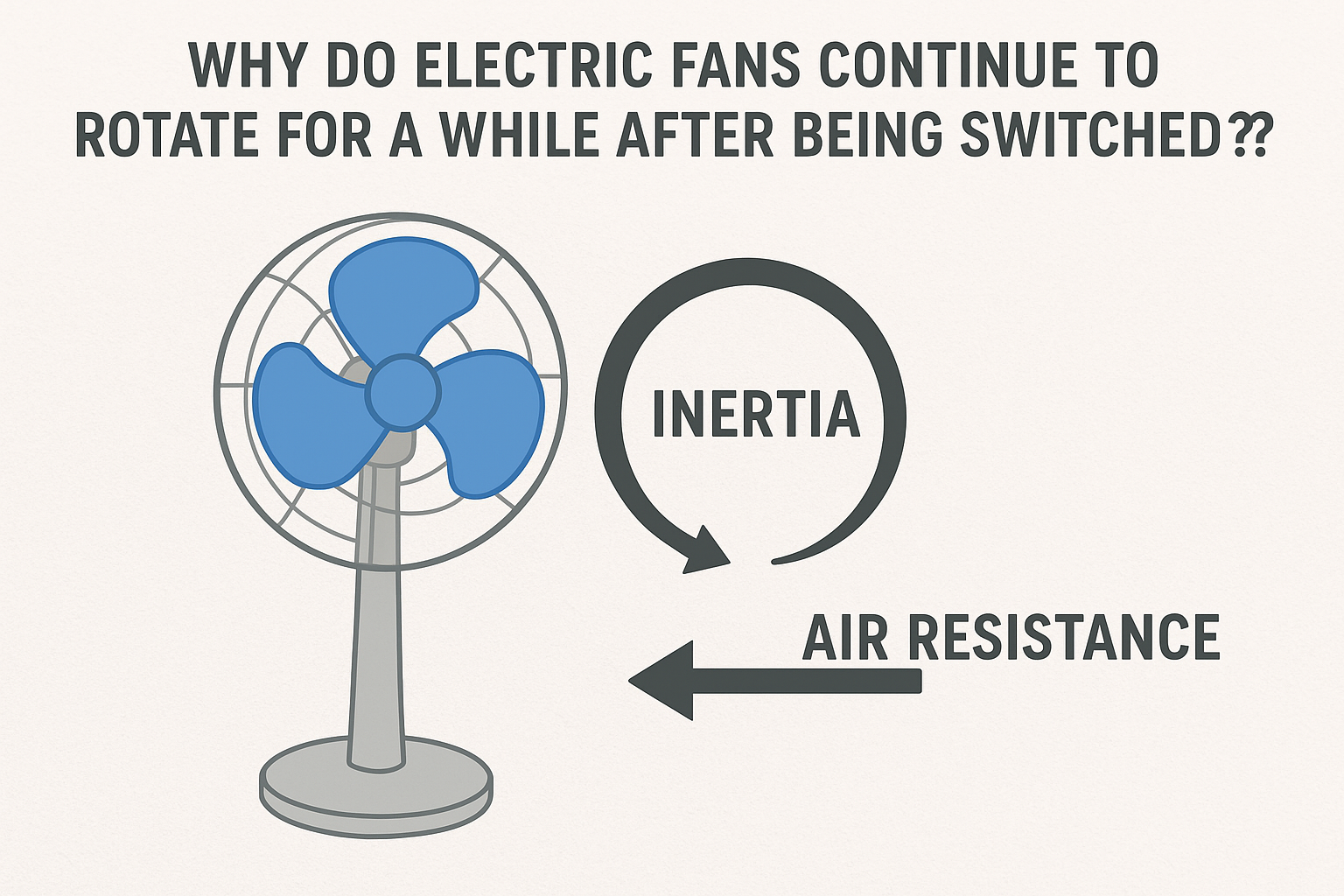Have you ever noticed that when you switch off an electric fan, it doesn’t stop immediately? Instead, it keeps rotating for a while and gradually slows down until it finally stops. Let’s understand the science behind this everyday phenomenon.
The Concept of Inertia
The primary reason is inertia — a property of matter described by Newton’s First Law of Motion.
- According to Newton’s First Law, an object in motion continues to stay in motion unless acted upon by an external force.
- When the fan is running, its blades gain rotational momentum. Even after switching off the power supply, the blades want to continue moving due to inertia.
Energy Stored in Motion
While running, the electric motor supplies energy to the fan blades. This energy is stored as kinetic energy of rotation.

- Here, III is the moment of inertia of the blades, and
- ω is the angular velocity.
When you turn off the switch, no more electrical energy is supplied, but the fan blades keep moving because they still have stored kinetic energy.
Why Does It Eventually Stop?
The fan doesn’t rotate forever. It gradually slows down because of:
- Air resistance → The blades push against the air, creating drag that reduces their speed.
- Friction in bearings → The fan shaft and motor parts create friction that resists motion.
- Electrical losses → Some residual currents in the motor coils also oppose motion.
These forces act as external resistances, converting the fan’s kinetic energy into heat and sound, and finally bring the fan to rest.
Final Answer
An electric fan continues to rotate for a while after being switched off because of inertia and the stored kinetic energy of its rotating blades. It eventually stops due to air resistance, bearing friction, and other losses that gradually dissipate this energy.
